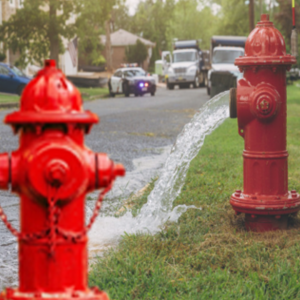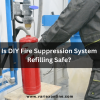![]()
Fire Immuniser
+91-7829629111
Email: info@variex.in
Varistor Technologies Pvt. Ltd.
Block-1, First Floor, Ardente Office One, Hoodi Circle, ITPL Main Road, Bengaluru, Karnataka 560048, IN
Standard Operating Procedure Of Fire Hydrant System
A robust Standard Operating Procedure (SOP) for a fire hydrant system is indispensable for ensuring swift and effective response to fire emergencies. This SOP outlines detailed procedures for operating, testing, and maintaining the system, providing guidance to personnel responsible for fire safety.
1. Pre-Operational Checks:
- Conduct thorough visual inspections of all components, including hydrants, valves, pipes, couplings, and hoses, to identify any signs of damage, corrosion, or obstructions.
- Verify the accessibility of all hydrants and ensure that no obstacles impede their operation.
- Test pressure gauges and flow meters to ensure accuracy and functionality.
- Review emergency contact information and ensure communication systems are operational.
2. Activation Procedures:
- In the event of a fire, promptly notify emergency services and designated personnel.
- Proceed to the nearest fire hydrant and activate the system by opening the main control valve.
- Open the outlet valve at the hydrant and connect firefighting hoses, ensuring proper coupling and securing connections.
- Coordinate with the incident commander and other emergency responders to determine water flow requirements and deployment strategies.
3. Firefighting Operations:
- Follow established firefighting protocols and safety procedures, including maintaining safe distances from the fire and wearing appropriate protective gear.
- Direct water flow using selected nozzles, applying water to the base of the fire to suppress flames effectively.
- Monitor water pressure and flow rates continuously, adjusting as necessary to optimize firefighting efforts.
- Communicate effectively with team members and maintain situational awareness throughout the operation.
4. Post-Operational Procedures:
- After the fire is extinguished, close the outlet valve at the hydrant and shut off the main control valve to deactivate the system.
- Conduct a comprehensive inspection of all equipment, documenting any damage, wear, or malfunction for prompt repair or replacement.
- Replenish used firefighting hoses and equipment and return them to their designated storage locations.
- Debrief with personnel involved in the firefighting operation, discussing strengths, weaknesses, and lessons learned for future improvement.
5. Regular Maintenance and Testing:
- Establish a routine maintenance schedule, including periodic inspections, flow tests, lubrication of valves, and flushing of pipes to prevent corrosion and ensure operational readiness.
- Conduct annual pressure tests and flow tests to verify system integrity and performance, making adjustments or repairs as needed.
- Provide ongoing training for personnel on fire hydrant system operation, maintenance procedures, and emergency response protocols.
- Maintain detailed records of maintenance activities, testing results, and equipment inventory for compliance purposes and historical reference.
Conclusion
A comprehensive SOP for a fire hydrant system serves as a vital resource for ensuring the effective operation, maintenance, and safety of the system. By adhering to established procedures and conducting regular training and maintenance, personnel can confidently respond to fire emergencies, safeguarding lives and property from the devastating impact of fires.
Frequently Asked Questions
An SOP for a fire hydrant system is a detailed document outlining step-by-step procedures for operating, testing, and maintaining the system to ensure effective response to fire emergencies.
An SOP provides standardized guidelines for personnel, ensuring consistent and efficient operation of the system during fire emergencies. It enhances safety, reduces response times, and minimizes the risk of errors or equipment failures.
The responsibility for developing and implementing an SOP typically falls on building owners, facility managers, or designated safety officers. They work closely with fire safety professionals and relevant authorities to ensure compliance with regulations and best practices.
A comprehensive SOP should include pre-operational checks, activation procedures, firefighting operations, post-operational procedures, and regular maintenance and testing protocols. It should also address emergency communication, personnel training, and record-keeping requirements.
SOPs should be reviewed and updated regularly to reflect changes in regulations, equipment, or operational procedures. It is recommended to review the SOP at least annually and after any significant modifications to the system or facility.
Final Say
At VariEx.in and VariexOnline.com, we specialize in supplying and installing top-quality fire fighting systems and equipment. From fire extinguishers to advanced suppression systems, we offer comprehensive solutions tailored to your needs. Our experienced team ensures precise installation and maintenance for optimal safety.
Trust VariEx for reliable fire protection. Contact us online or call 7829629111 to learn more.









